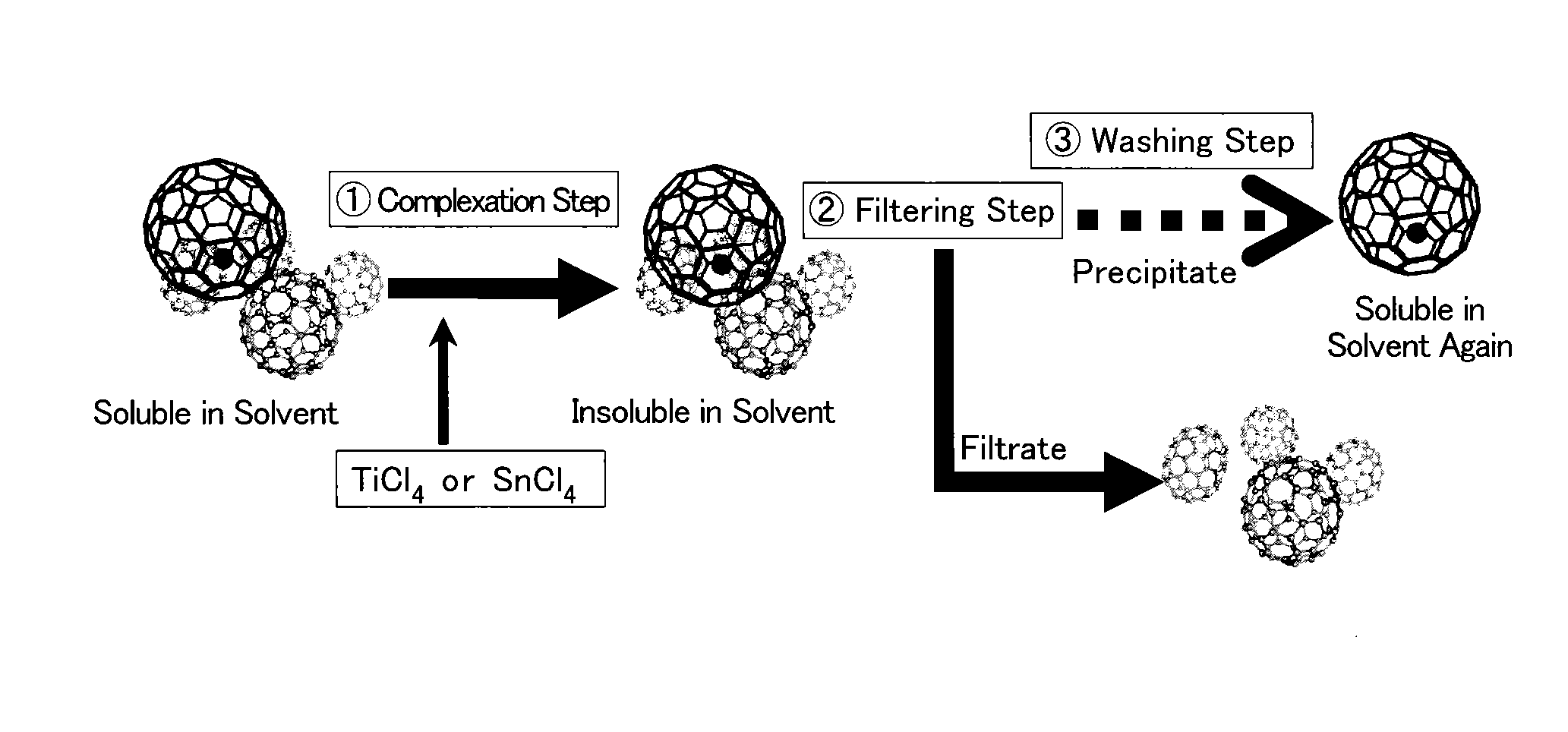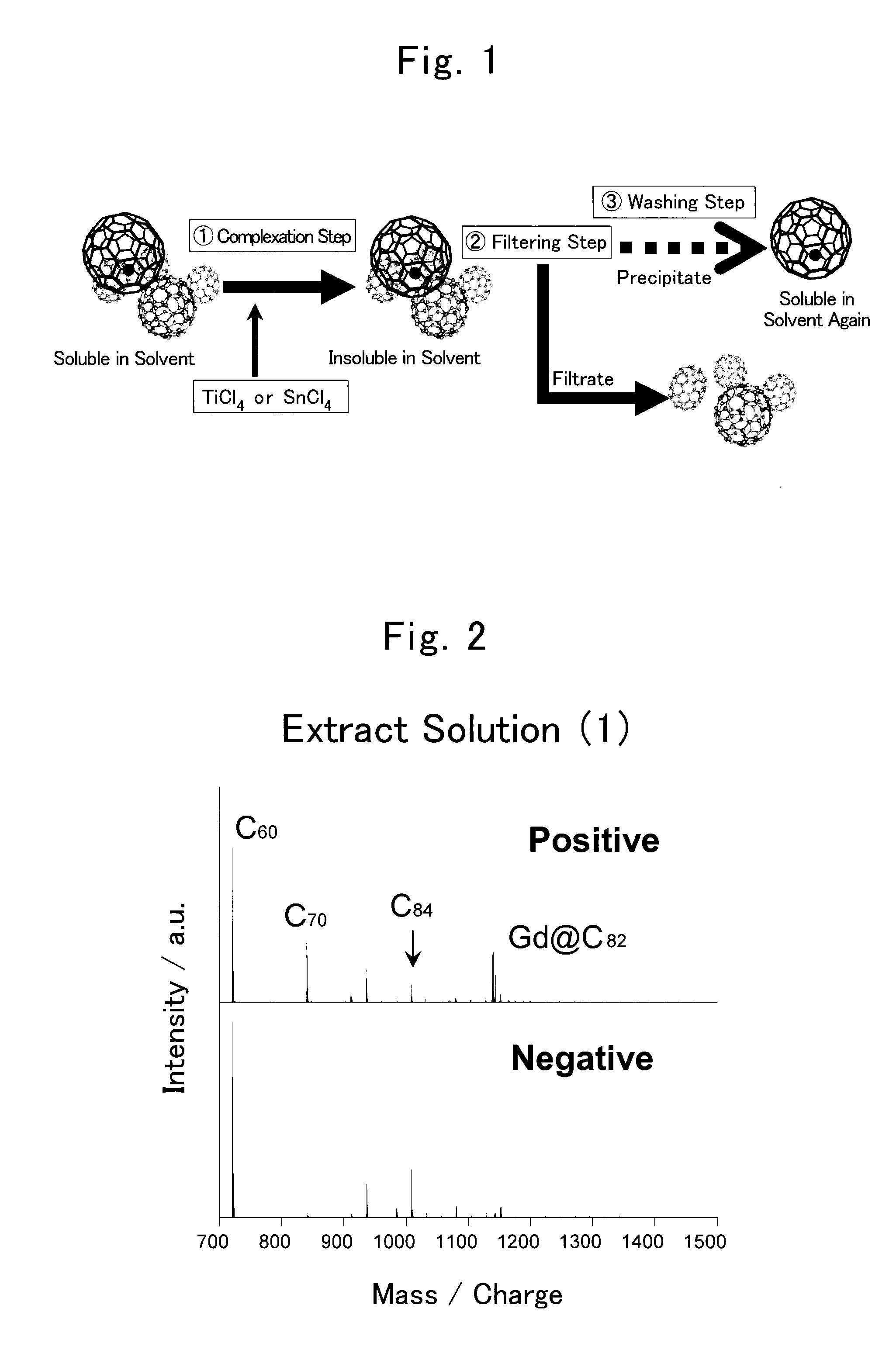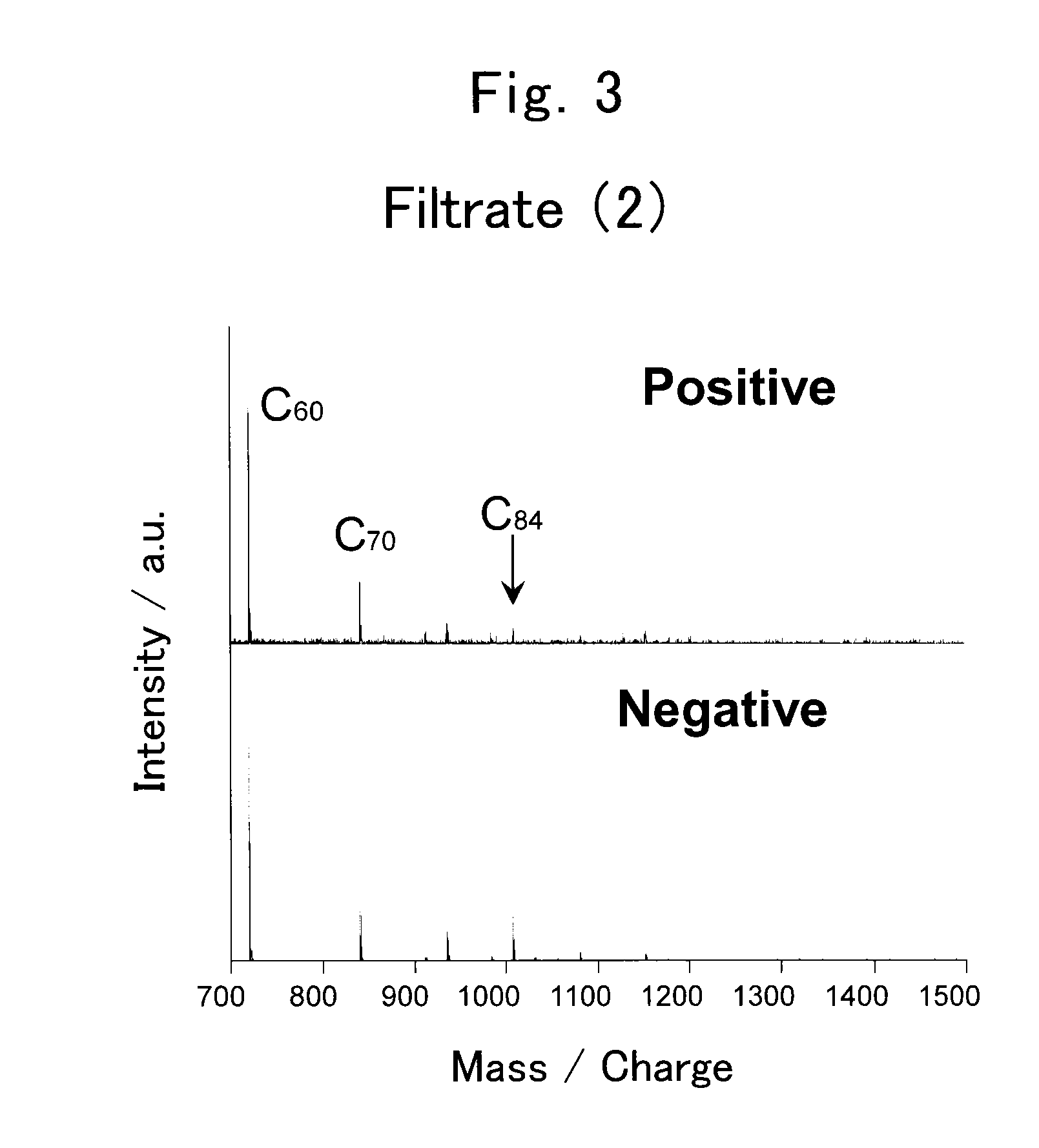Method for collecting metal-containing fullerene
a technology of endohedral metallofullerene and recovery method, which is applied in the field of recovering endohedral metallofullerene, can solve the problems of large loss of endohedral metallofullerene, low efficiency in recovering endohedral metallofullerene, and large amount of developing solvent for hplc, and achieves high recovery yield
- Summary
- Abstract
- Description
- Claims
- Application Information
AI Technical Summary
Benefits of technology
Problems solved by technology
Method used
Image
Examples
example
Example 1
[0061]In the present example, gadolinium-encapsulated fullerene was separated from crude fullerenes which were extracted from soot.
[0062]Composite rods (trade name Klasta Mate, produced by Toyo Tanso Co., Ltd.) of carbon and gadolinium (Gd) were prepared. The composite rods were formed by applying heat treatment to a mixture of 90.4 mass % of graphite powder and 9.6 mass % of Gd powder. As a pretreatment, the composite rods were baked at a current value of 320 A (ampere) for 30 minutes.
[0063]Arc discharge was performed using the pretreated composite rods and arc discharge apparatus. The arc discharge apparatus was MS20 / 15MA (produced by Ulvac Material Co., Ltd., currently known as Ulvac, Inc.) and had a cathode block and an anode holder for holding a composite rod to serve as an anode block in a discharge chamber. The cathode block and the anode block have a gap of 1 to 2 mm and an arc discharge was generated therebetween. Discharge current was 500 A and discharge voltage w...
example 2
[0078]Next, thulium (Tm) was encapsulated in fullerenes and obtained endohedral metallofullerenes were separated in a similar way to that of Example 1.
[0079]Composite rods (trade name Klasta Mate, produced by Toyo Tanso Co., Ltd.) of carbon and thulium (Tm) were prepared. The composite rods comprised 89.8 mass % of graphite powder and 10.2 mass % of Tm powder.
[0080]Soot was collected by baking the composite rods and then causing arc discharge therebetween in a similar way to that of Example 1 and crude fullerenes were extracted from the soot. Using the crude fullerenes, a complexation step, a filtering step, a washing step and a dissolving step were performed in a similar way to that of Example 1. Solvents used in the steps were CS2 and a Lewis acid used in the complexation step was TiCl4. The amount of TiCl4 added to 1 mg of a reaction solution was 11 mg. The amount of TiCl4 added to 1 ml of the crude fullerenes in the reaction solution was 1.1 mg. Reaction time was 60 seconds.
[008...
example 3
[0086]In this example, lutetium (Lu)-encapsulated endohedral metallofullerenes were separated in a similar way to that of Example 1.
[0087]Composite rods (trade name Klasta Mate, produced by Toyo Tanso Co., Ltd.) of Lu and carbon were prepared. The composite rods comprised 80.8 mass % of graphite powder and 19.2 mass % of Lu powder. Soot was collected by baking the composite rods and then causing arc discharge therebetween and crude fullerenes were extracted from the soot under similar conditions to those of Example 1. Using an extract solution of the crude fullerenes as a reaction solution, a complexation step, a filtering step, a washing step and a dissolving step were performed in a similar way to that of Example 1. A solvent used in the complexation step was CS2 and a Lewis acid used in the complexation step was TiCl4. The amount of TiCl4 added to 1 ml of the reaction solution was 11 mg. The amount of TiCl4 added to 1 mg of the crude fullerenes in the reaction solution was 1.1 mg...
PUM
| Property | Measurement | Unit |
|---|---|---|
| reaction time | aaaaa | aaaaa |
| reaction time | aaaaa | aaaaa |
| time | aaaaa | aaaaa |
Abstract
Description
Claims
Application Information
 Login to View More
Login to View More - R&D
- Intellectual Property
- Life Sciences
- Materials
- Tech Scout
- Unparalleled Data Quality
- Higher Quality Content
- 60% Fewer Hallucinations
Browse by: Latest US Patents, China's latest patents, Technical Efficacy Thesaurus, Application Domain, Technology Topic, Popular Technical Reports.
© 2025 PatSnap. All rights reserved.Legal|Privacy policy|Modern Slavery Act Transparency Statement|Sitemap|About US| Contact US: help@patsnap.com



